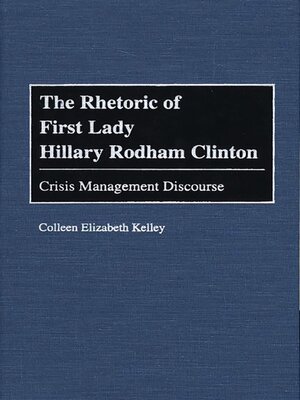The Rhetoric of First Lady Hillary Rodham Clinton
ebook ∣ Crisis Management Discourse · Praeger Series in Political Communication
By Colleen Kelley

Sign up to save your library
With an OverDrive account, you can save your favorite libraries for at-a-glance information about availability. Find out more about OverDrive accounts.
Find this title in Libby, the library reading app by OverDrive.



Search for a digital library with this title
Title found at these libraries:
| Library Name | Distance |
|---|---|
| Loading... |
Kelley provides an examination of Hillary Rodham Clinton's rhetorical responses to mediated versions of crises in the Clinton Administration. She begins by examining the historical First Lady, and then looks at mediated political realities in general as well as those of the Clinton presidency. Kelley also examines the rhetorical management of political crises and the crises management style of First Ladies, including Florence Harding and Eleanor Roosevelt.
The book focuses on the analysis of Hillary Rodham Clinton's rhetorical management of crises in her husband's Administration, including health care, Travelgate, Whitewater, and allegations of sexual misconduct. Kelley's approach is grounded in Kenneth Burke's framework of language as a symbolic means of inducing cooperation through rhetorical identification. She concludes with speculation regarding both the degree of success of Hillary Clinton's efforts as well as the implications of those efforts to rhetorical and political communication and feminist theory. This book will be of particular interest to scholars and researchers of the presidency and the role of the First Lady, political communication, and feminist studies.
The book focuses on the analysis of Hillary Rodham Clinton's rhetorical management of crises in her husband's Administration, including health care, Travelgate, Whitewater, and allegations of sexual misconduct. Kelley's approach is grounded in Kenneth Burke's framework of language as a symbolic means of inducing cooperation through rhetorical identification. She concludes with speculation regarding both the degree of success of Hillary Clinton's efforts as well as the implications of those efforts to rhetorical and political communication and feminist theory. This book will be of particular interest to scholars and researchers of the presidency and the role of the First Lady, political communication, and feminist studies.







